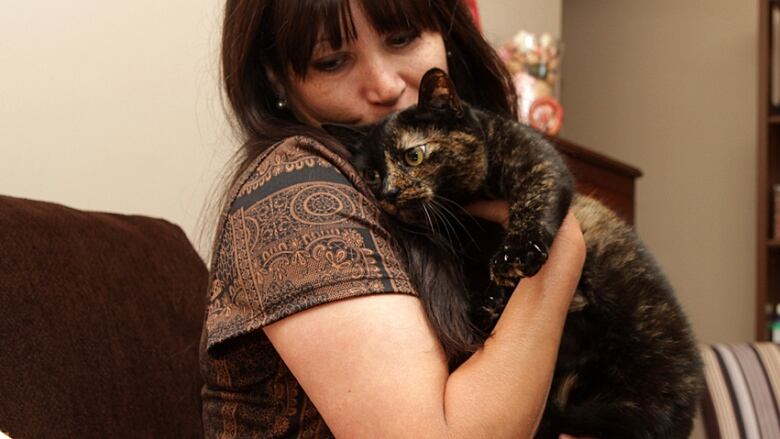Hamilton animal services wants to kill fewer cats

A city department under fire for euthanizingcats and not adopting them out is looking at changing how it operates next year.
Hamilton Animal Services (HAS), which deals withlost or stray animals, doesnt allow public adoptions, and bylaw, only has to keep animals for three days before theyre euthanized.
But officials say they want to change those methods early in 2015, including allowing outside adoptions and volunteers to come in and socialize with the cats to keep them adoption-ready. Ithopes it can get political support to do it.
We realize we need to make some changes, said Paola Pianegonda, manager of animal services.
Any and allanimalsnot saved by a rescue are killed.- RenateSimon
When it comes to reducing euthanasia rates, were trying to do better every year, she said.
HAS and numerous local activists have tried to make this happen before. In 2007, a consultant did an operational review of HAS and recommended a model more like Calgary's, where cats require licences. By licensing cats, the review says, there's a higher rate of cat return and a dramatically lower euthanization rate. Council voted against adopting the Calgary model.
For more than a decade, activists have protested and written letters asking for changes such as public adoptions, longer times in the shelter and no-cost spay and neuter clinics. They're also calling for a clearer distinction between the SPCA and HAS so owners know where they are surrendering their animals.
"HAS is a public tax-funded pound, set up as a licencing and extermination facility," said Renate Simon with the group Hamilton Animal Services Stop the Killings. "Any and allanimalsnot saved by a rescue are killed."
Jill McKerrow Collins, who moderates the Facebook group Hamilton Animal Services Promoting and Supporting Change, is among those who has written to every member of council. So far, shes only heard back from two Coun. Brian McHattie and Coun. Brad Clark. Both are running for mayor.
Ive gotten two responses in two and a half years, she said.
No one wants to step outside of that comfort zone and do something.
Once you start peeling it back, its a real schmozzle.- Coun. Brian McHattie
According to the activist-run website rescuehamiltoncats.com, HAS has euthanized209 cats so far this year, or about seven a week. Forty-six have been returned to their owners and local rescues have taken 639 of them. The Hamilton-Burlington SPCA has taken 378. Rescues come from as far as Mississauga and Toronto.
Mired by bureaucracy
In 2005, HAS euthanized more than 4,000 cats. Thats declined to just over 1,000 in 2013. But it's still too high, particularly compared to other cities, McKerrow Collins said.
Its shocking how behind we are, she said.
The decline in euthanasia rates is in part because of work by local rescues, Pianegonda said. HAS also doesnt pick up stray cats anymore, particularly since many apparent strays actually have homes.
There are obstacles to the change. One is political city councillors have to approve any changes, first through a committee and then at council and there doesnt seem to be any political will, said McKerrow Collins.
It seems like such a long process to get anything to council, and when it does get to council, it just seems like it gets washed away, she said.
The shelter itself is another challenge. Offering animals for adoption requires separating them from incoming strays, so an adoptive family doesnt end up with a sick animal, said Karen Edwards, an animal services adviser. HAS shares space with the SPCA and its shelter is about half the size of a standard animal shelter.
Need for a 'cat strategy'
Space is an issue, Edwards said.
Its too late to get anything done before Octobers municipal election, McHattie said. But if re-elected, he wants to introduce a city-wide cat strategy aimed at curbing Hamiltons cat population, including mandatory licensing and low-cost spay and neuter clinics.
The whole department needs an overhaul when it comes to cats, he said.
Once you start peeling it back, its a real schmozzle.
People don't come looking fast enough.- Karen Edwards, Hamilton Animal Services
Clark plans to listen to McKerrow Collins and staff to learn more about the issue, but said hes open to change.
There is an issue here that needs to be resolved, he said.
Few cats claimed
Provincial legislation only dictates HAS keep animals for three days. In 2013, the average stay of a cat was 12.04 days before it was rescued, retrieved or euthanized. The average stayfor a dog was 4.72 days a shorter number because more dogs are rescued.
As much as 70 per cent of dogs collected by HAS are retrieved by their owners, while only three per cent of cats are, Edwards said.
Dogs are less likely to wander, she said, whereas cats can disappear for days. Owners, assuming the cat will come back, might not know to come looking in time.
"A lot of people dont even come looking for their cats the day it goes missing," Edwards said. "They could go up for a week before they come here."
"People don't come looking fast enough.
'What else can we do?'
HAS hopes to include more education in its mandate, Pianegonda said. This includes urging people to get their cats fixed and keep them indoors.
It would also educate people on the existence of HAS and its shelter.
McKerrow Collins has heard promises of change before, but remains skeptical that the political votes are there.
I cant stress enough that its so frustrating not getting anywhere, she said.
As for her and other volunteers, well just keep going, she said. I mean, what else can we do?












_(720p).jpg)


 OFFICIAL HD MUSIC VIDEO.jpg)
.jpg)



























































































